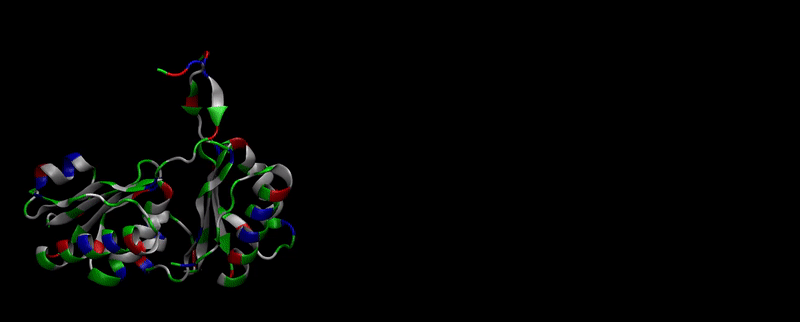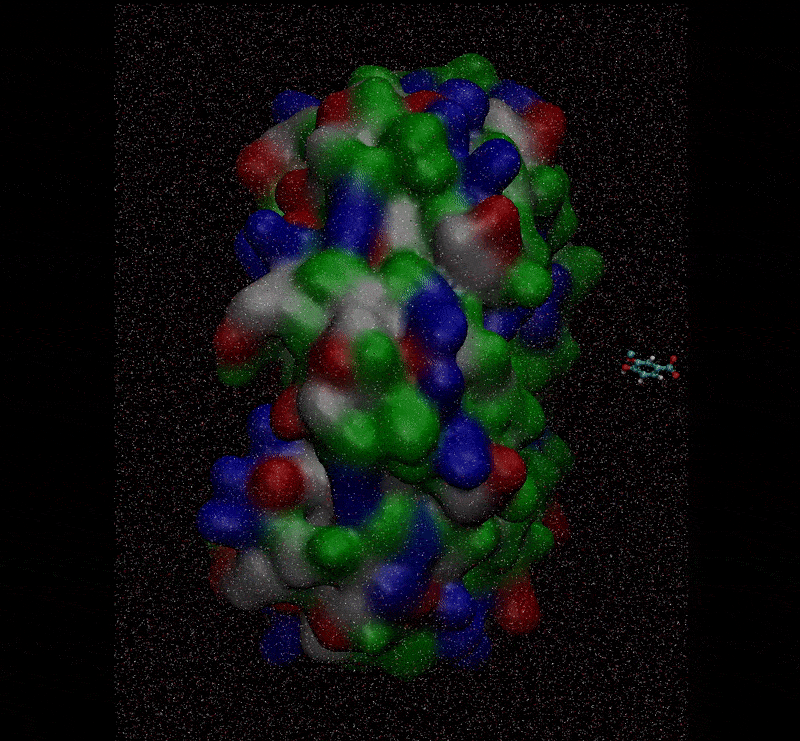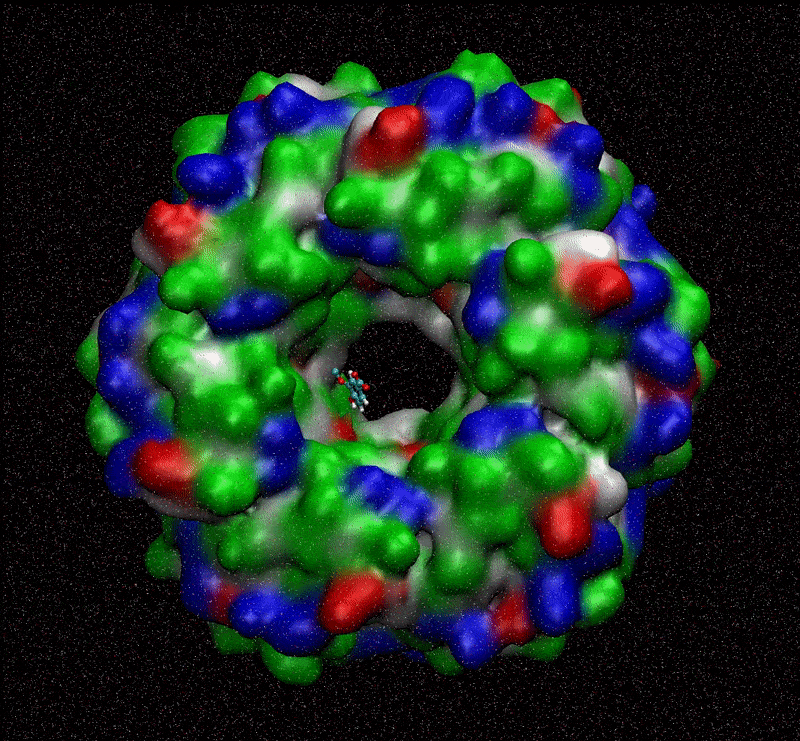Molecular Dynamics
Molecular Dynamics is a computational (numerical) method of simulation, in which the equations of motion are solved numerically to study the physical movement of atoms and molecules in a system. There are several programs that can perform Molecular Dynamics (MD) Simulations: MacroModel, LAMMPS, NAMD, etc. are some examples, but in this work GROMACS (gmx), a high performance MD program, was used to solve the equations of motion and Visual Molecular Dynamics (VMD) was used to construct the systems.
Our MD Simulations
As explained in Design, protein engineering was needed to modify one of the proteins of the Bacterial Microcompartment (BMC) to increase the permeability of substrate and enable it to pass through the proteinic shell. Specifically, an amino-acidic deletion in the n-terminal of the pduU protein (one of the structural proteins of pdu BMC) was desired.
So, we took the FASTA format of the protein
[[File: ]] Image/GIF – FASTA – highlighted letters
And deleted the first 17 amino-acids. We chose to delete only 17 and no more because that modification had already been reported in reference of deletion for other purposes.
We then proceeded to evaluate it’s tertiary conformation with tool, which uses what it uses, sequence thing, and we obtained the predicted 3D conformation.
We estimated that this 3D array would be stable because, as explained in Design, most of that remaining domain is a very conserved one, but we still wanted to prove it through Molecular Dynamics simulations, which we performed using GROMACS package through 2 methods:
- 1) Comparing RMSDs of the WT and modified proteins through long simulations.
- 2) Comparing ddG of both proteins using Umbrella Sampling (US) technique.
[[File: ]] Graph – RMSD – pduUWT || [[File: ]] Graph – RMSD – pduUmod
The RMSD graphs show that, at least during N the proteins are stable.
[[File: ]] Graph – ddG – pduUWT || [[File: ]] Graph – ddG – pduUmod
The ddG graphs show that the formation energy for the systems doesn’t change very much, which tell us that the modification will not affect very much the formation of dimmers, and by consequence, the formation of stable pduUmod proteins.
We also needed to verify that the new porous allowed the substrate of the metabolic pathway to pass through the proteinic shell of the BMC. Which we also did using US technique.
[[File: ]] graphs – dG – pduUWT – vanillate || [[File: ]] graphs – dG – pduUmod – vanillate
Since pduA protein also has a little pore in it’s tertiary conformation, we decided to perform the same analysis with this sub-unit.
[[File: ]] GIF – pull – pduA – vanillate
[[File: ]] graphs – dG – pduA – vanillate
As we can see, the energetic barrier that Vanillate has to overcome to pass to the other side of the porous is bigger in pduA and pduUWT than in pduUmod, which is exactly what we wanted to achive and demonstrate.
How we did it?
After we determined which BMC system we would use (pdu), as explained in Design, we analyzed the subunits that conform the proteinic complex of pdu BMC complex and determined that “U” subunit was a good candidate, so we examined it’s structure with higher detail and found out that we used SWISS-MODEL¹ to predict the 3D structure of the modified protein. Here, homology modelling was used to inferr stoichiometry and overall structure of the modified protein starting from the amino acid sequences of the protein.
References
¹ Waterhouse, A., Bertoni, M., Bienert, S., Studer, G., Tauriello, G., Gumienny, R., Heer, F.T., de Beer, T.A.P., Rempfer, C., Bordoli, L., Lepore, R., Schwede, T. SWISS-MODEL: homology modelling of protein structures and complexes. Nucleic Acids Res. 46(W1), W296-W303 (2018).
WHAM used: J. S. Hub, B. L. de Groot and D. van der Spoelg_wham - A free weighted histogram analysis implementation including robust error and autocorrelation estimates, J. Chem. Theory Comput. 6 (2010) pp. 3713-3720



